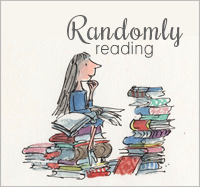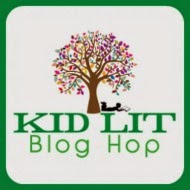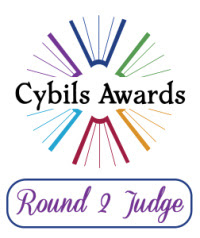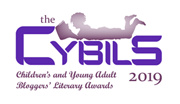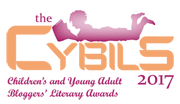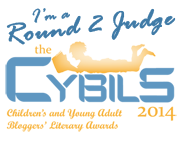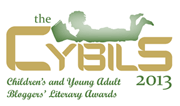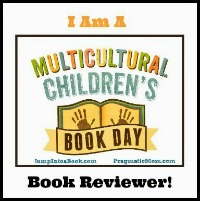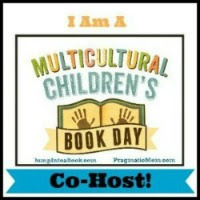
About the Book
 Title:
Title: A Year in the Life of the Secret Garden |
Author: Valarie Budayr |
Illustrator: Marilyn Scott-Waters |
Publication Date: November, 2014 |
Publisher: Audrey Press |
Pages: 144
| Recommended Ages: 5 to 99
Book Description: Award-winning authors
Valarie Budayr and
Marilyn Scott-Waters have co-created
A Year in the Secret Garden to introduce the beloved children’s classic,
The Secret Garden to a new generation of families. This guide uses over two hundred full color illustrations and photos to bring the magical story to life, with fascinating historical information, monthly gardening activities, easy-to-make recipes, and step-by-step crafts, designed to enchant readers of all ages. Each month your family will unlock the mysteries of a
Secret Garden character, as well as have fun together creating the original crafts and activities based on the book.Over 140 pages, with 200 original color illustrations and 48 activities for your family and friends to enjoy, learn, discover and play with together.
A Year In the Secret Garden is our opportunity to introduce new generations of families to the magic of this classic tale in a modern and innovative way that creates special learning and play times outside in nature. This book encourages families to step away from technology and into the kitchen, garden, reading nook and craft room.
My Review:
It's a book I loved as a young reader but it's been a while since I read it and I wanted to refresh my memory, the better to enjoy reading this lovely new book by Valarie Budayr and Marilyn Scott-Waters.
I was pretty excited when I first heard about A Year in the Secret Garden because while I love a good novel, I also love a good activity-learning book as well and that is just what this is.
Beginning with September and Mary's life in India, we are introduced to the delicious taste and smells of Indian spices with a recipe for Indian Style Chicken Curry followed by instructions for making a traditional Rangoli, a brightly colored Indian decoration hung in people's homes.
Life changes drastically for Mary when she arrives in England. There is different food, different kinds of people, different things to do. All of this is captured in the A Year in the Secret Garden with easy recipes, wonderful character studies, cultural information about Britain and lots of fun DIY crafts and projects kids can do throughout the year.
November must have been quite a shock for Mary, with its cold weather and days that were getting shorter and shorter, especially on the Yorkshire moor. A good way for anyone to start the day would be with some hearty hot Oatcakes, such as the ones that Dickon's mother Susan Sowerby would make for her family of 12.
You can find the recipe for these Oakcakes along with instruction for making a jump rope like the one Susan Sowerby sent over for Mary to play with. Jumping rope warmed Mary and put some rosy color in her cheeks, making her look less sour. And you will find some nice Jump Rope Rhymes to learn in the book.
As Mary skipped around the grounds of Misselthwaite, she became friendly with the elderly gardener, Ben Weatherstaff, and November includes a nice character study of this loyal, trustworthy man.
But there are other favorites to be found. One of mine was in December and seeing a recipe for Toads in the Hole made with sausages and Yorkshire Pudding, a dish my mom used to make for us when we were kids, followed by instructions for making a Winter Bird Feeder. If you are planning on reading The Secret Garden soon, you might find January's Yorkshire Phrasebook handy since Burnett wrote a lot of dialect into her novel. And if your kids are anxious for the return of Spring as mine always was, they are sure to want to plant a Garden in a Jar, a fun way to experience nature up close and personal.
In June, kids can learn about traditional afternoon tea and how to do one, complete with a recipe for delicious lemon cookies. Afternoon tea is delightful outside on a warm sunny day, especially after learning how to make daisy chains and Midsummer Dancing Ribbon Wreaths.
A Year in the Secret Garden is a colorful, beautifully illustrated reader-friendly book jam packed with so much for you and your kids to read and do, that it is sure to become a family favorite, especially since it cover all four seasons of the year.
About the Author: Valarie Budayr
 Valarie Budayr
Valarie Budayr loves reading and bringing books alive. Her popular website,
www.jumpintoabook.com, inspires children and adults alike to experience their books through play, discovery, and adventure.
She is founder of Audrey Press, an independent publishing house, as well as an Amazon and iTunes best-selling author. She has written
The Fox Diaries: The Year the Foxes Came to our Garden and
The Ultimate Guide to Charlie and the Chocolate Factory. Valarie is passionate about making kid’s books come alive and encouraging families and schools to pull books off the shelves and stories off the pages.
About the Illustrator: Marilyn Scott-Waters
 Marilyn Scott-Waters
Marilyn Scott-Waters loves making things out of paper. Her popular website,
www.thetoymaker.com, receives 2,000 to 7,000 visitors each day, who have downloaded more than six million of her easy-to-make paper toys. Her goal is to help parents and children spend time together making things.
She is the creator of a paper toy craft book series
The Toymaker’s Christmas: Paper Toys You Can Make Yourself (Sterling), and
The Toymaker’s Workshop: Paper Toys You Can Make Yourself (Sterling). She is also the co-creator with J. H. Everett of the middle grade nonfiction series,
Haunted Histories, (Christy Ottaviano Books / Henry Holt Books for Young Readers). Ms. Scott-Waters illustrated
The Search For Vile Things (Scholastic), and created paper engineering for
Pop & Sniff Fruit (Piggy Toes Press).
A Year in the Secret Garden Blog Tour Schedule (2014)
EXPLORING SEPTEMBER
November 1
November 2
November 3
EXPLORING OCTOBER
November 4
November 5
November 6
EXPLORING NOVEMBER
November 7
November 8
EXPLORING DECEMBER
November 9
November 10
EXPLORING JANUARY
November 11
November 12
EXPLORING FEBRUARY
November 13
November 14
EXPLORING MARCH
November 15
November 16
EXPLORING APRIL
November 17
November 18
EXPLORING MAY
November 19
November 20
November 21
EXPLORING JUNE
November 22
November 23
November 24
EXPLORING JULY
November 25
November 26
November 27
EXPLORING AUGUST
November 28
November 29
November 30
* $100 Blog Tour Giveaway *
 Prize:
Prize: $100 Amazon Gift Card or PayPal cash (winner’s choice)
Contest ends: December 7, 11:59 pm, 2014
Open: Internationally
How to enter: Please enter using the Rafflecopter widget below.
Terms and Conditions: NO PURCHASE NECESSARY TO ENTER OR WIN. VOID WHERE PROHIBITED BY LAW. A winner will be randomly drawn through the Rafflecopter widget and will be contacted by email within 48 hours after the giveaway ends. The winner will then have 72 hours to respond. If the winner does not respond within 72 hours, a new draw will take place for a new winner. Odds of winning will vary depending on the number of eligible entries received. This contest is in no way sponsored, endorsed or administered by, or associated with Facebook. This giveaway is sponsored by the authors Valarie Budayr and Marilyn Scott-Waters and is hosted and managed by Renee from Mother Daughter Book Reviews. If you have any additional questions – feel free to send and email to Renee(at)MotherDaughterBookReviews(dot)com.
a Rafflecopter giveaway










































